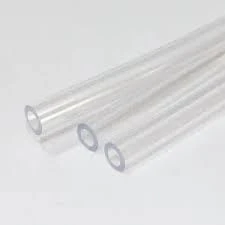Nov . 18, 2024 10:37 Back to list
HDPE Welding Rods for Durable and Reliable Plastic Fabrication Solutions
Understanding HDPE Welding Rods A Comprehensive Overview
In the realm of plastics fabrication, the use of high-density polyethylene (HDPE) welding rods has gained significant traction due to their unique properties and applications. HDPE is one of the most versatile plastics in today’s market, known for its strength, durability, and resistance to various chemicals and environmental factors. This article delves into the essential aspects of HDPE welding rods, including their composition, applications, benefits, and best practices for efficient welding.
What are HDPE Welding Rods?
HDPE welding rods are specially designed plastic rods used for welding HDPE materials. These rods are extruded from the same high-density polyethylene material, ensuring compatibility and optimal fusion during the welding process. Typically, HDPE rods are available in a variety of diameters and colors, making them suitable for different applications and preferences.
Applications of HDPE Welding Rods
The versatility of HDPE welding rods makes them suitable for a wide range of applications. Some common uses include
1. Pipe Repairs HDPE pipes are widely used in various industries, including water distribution, agriculture, and gas transportation. HDPE welding rods provide an effective solution for repairing or joining these pipes, ensuring a leak-proof and durable connection.
2. Plastic Fabrication In manufacturing settings, HDPE welding rods are utilized to fabricate custom plastic components, such as tanks, containers, and other industrial equipment. The rods allow for precise welding and a strong bond that can withstand harsh operating conditions.
3. Marine Applications Due to their resistance to corrosion and moisture, HDPE welding rods are also popular in marine applications. They can be used to repair and construct boats, docks, and other marine structures.
4. Landfill Liners HDPE ponds and liners used in landfills benefit from strong and reliable seals achieved through HDPE welding rods, helping to prevent leaks and protect the environment.
Benefits of Using HDPE Welding Rods
hdpe welding rod

Several benefits come with utilizing HDPE welding rods, including
- Durability HDPE is known for its exceptional strength and long lifespan, making it ideal for applications that demand robust materials. - Resistance to Chemicals HDPE welding rods can withstand exposure to various chemicals, ensuring longevity and reliability in challenging environments. - Ease of Use Welding HDPE with these rods is a relatively straightforward process, making it accessible for both professionals and DIY enthusiasts. - Cost-Effective Given their longevity and resistance to degradation, HDPE welding rods offer a cost-effective solution in the long run, reducing maintenance and replacement costs.
Best Practices for HDPE Welding
To ensure successful welding with HDPE rods, consider the following best practices
1. Preparation Properly clean the surfaces to be welded, removing any dirt, oil, or contaminants. This step is crucial for achieving a strong bond.
2. Temperature Settings Maintain the appropriate temperature during the welding process, as HDPE typically requires a temperature range of 400°F to 500°F. Using a welding machine with adjustable temperature settings can help achieve optimal results.
3. Welding Speed Work at a consistent speed to ensure even heat distribution and prevent overheating or underheating of the material.
4. Post-Weld Cooling Allow the welded joint to cool gradually to prevent stress and ensure structural integrity.
Conclusion
HDPE welding rods play a vital role in various industries, providing robust solutions for repairing and fabricating HDPE materials. Understanding their properties, applications, and best practices is crucial for anyone involved in plastic welding. By leveraging these advantages, businesses and individuals can enjoy the durability and reliability that HDPE has to offer, paving the way for efficient and effective plastic joining solutions.
-
High-Quality PPR Pipes and Fittings Durable ERA PPR & PVC PPR Solutions
NewsJul.08,2025
-
Black HDPE Cutting Board - Durable, Non-Porous & Food Safe HDPE Plastic Cutting Board
NewsJul.08,2025
-
High-Quality CPVC Panel Durable HDPE & PVC Panels Supplier
NewsJul.08,2025
-
Double PE Welding Rod Supplier - High Strength, Durable & Versatile Welding Solutions
NewsJul.07,2025
-
High-Quality PVC-O Pipe Supplier Durable 75mm PVC Pipe & Connections Leading PVC Pipe Company
NewsJul.07,2025
-
HDPE Drainage Pipe Supplier – Durable & Corrosion-Resistant Solutions
NewsJul.06,2025

